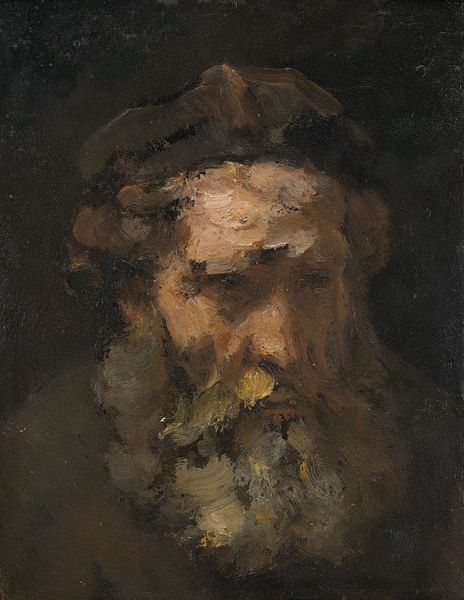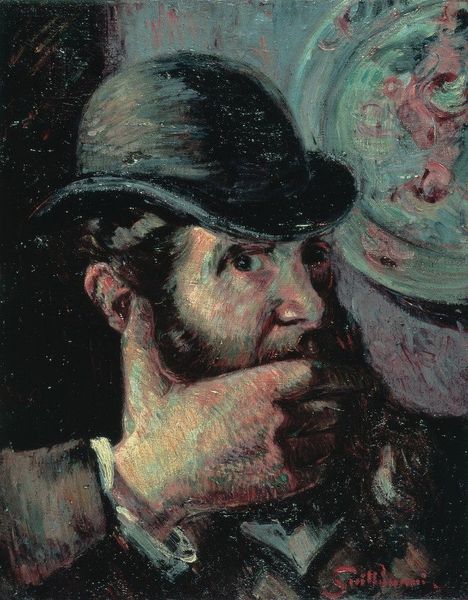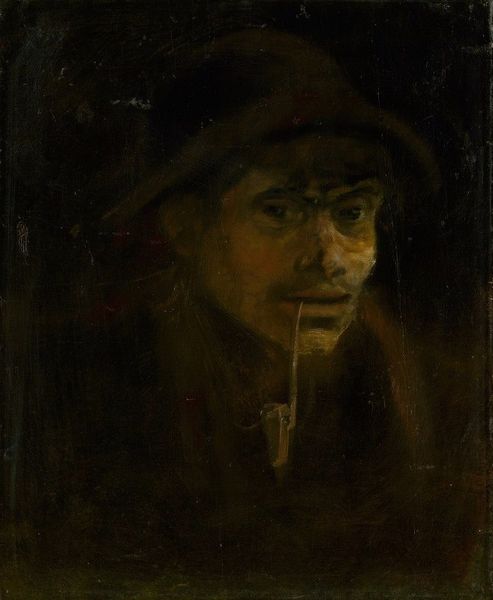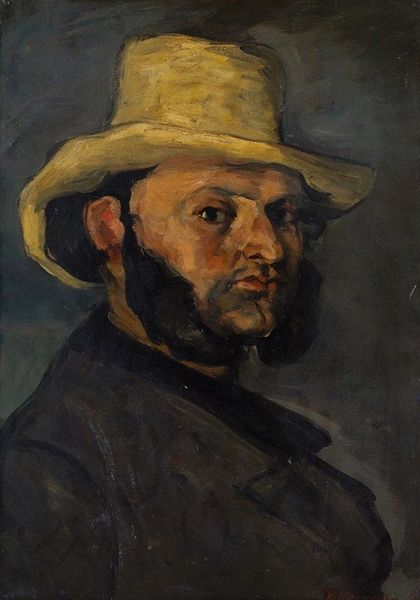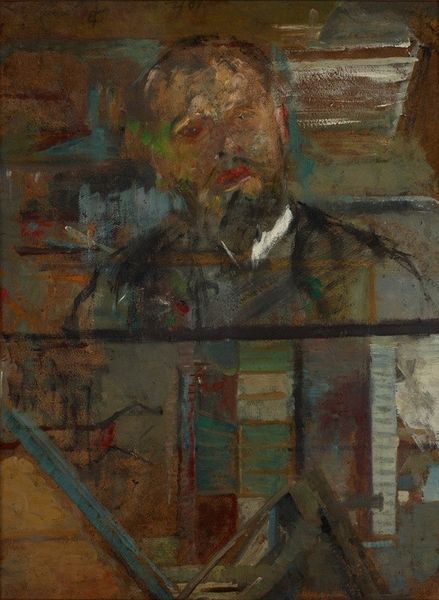
oil-paint, impasto
#
portrait
#
oil-paint
#
oil painting
#
impasto
#
realism
Dimensions: height 33.3 cm, width 24.6 cm, depth 6 cm
Copyright: Rijks Museum: Open Domain
Editor: Here we have *Portrait of the Art Dealer E.J. van Wisselingh,* likely painted between 1880 and 1912 by Marinus van der Maarel, using oil paint. The texture looks quite thick, almost sculptural. What stands out to me is the way the artist handled the materiality of the paint itself. What do you see here? Curator: The impasto you've pointed out is key. It tells us a lot about the process. This wasn't about meticulous detail, but about the act of applying the paint. What kind of brushstrokes do you see? How does that impact the surface of the piece? Editor: I notice short, almost choppy strokes. It gives a ruggedness to the image, a sense of the artist quickly building up the form, brick by brick, if you will. Almost raw… Curator: Precisely. And think about the societal context: what does it say that an artist is showcasing the very act of making, instead of disguising it? What does valuing this "rawness" tell us about changing views towards craft and labor at this time? Was painting finally more than mere representation, but presentation of its own artifice and toil? Editor: That's interesting. I hadn’t considered it in terms of labor. So, by emphasizing the materiality and process, the painting challenges the separation of "high art" from craft and production. It gives us, perhaps, insight into the commodification of art, the art dealer included? Curator: Exactly. And it’s worth thinking about the kind of consumption this image fosters. Is it for private contemplation, or is there an element of display? This kind of consideration gets us past "is it good," and starts thinking "what is its function, both in the art world and more broadly?” Editor: So much more than just a face on canvas! Looking at the art world's dynamics through this painting opens up a whole new level of understanding. Thanks! Curator: Indeed! The layers of meaning are often right there on the surface. You just have to look for them.
Comments
rijksmuseum about 2 years ago
⋮
In 1881 Elbert Jan van Wisselingh succeeded his father as owner of the art firm with which Breitner was primarily affiliated. In the period when Breitner was painting the ‘girls in kimonos’ Van Wisselingh was established in London and so Klaas Groesbeek was the artist’s direct contact person. The three men were also friends; Van Wisselingh and Groesbeek served as witnesses at Breitner and Marie Jordan’s marriage in 1901.
Join the conversation
Join millions of artists and users on Artera today and experience the ultimate creative platform.

